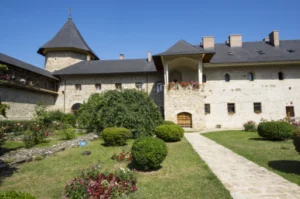San Antonio and Austin: A Growing Partnership for Economic Success
San Antonio, a vibrant city known for its rich history and culture, is currently experiencing an exciting economic transformation. The competition between Austin and San Antonio has always been evident, but now, these two sister cities are not just competing but are joining forces in a regional economic recruitment strategy that promises to bring even more growth and opportunity to the area.
A Collective Strategy
Launched in March 2021 by greater:SATX, this innovative strategy aims to harness the power of collaboration. Instead of fighting each other for new business investments, economic leaders are advocating for a united front to attract companies looking for new locations. They believe that by working together, the San Antonio-Austin corridor can shine brighter and lure in significant investments that benefit all.
According to Jenna Saucedo-Herrera, the President and CEO of greater:SATX, “Our partnership with Opportunity Austin and the economic development allies along the I-35 corridor has only improved.” As they prepare for upcoming legislative sessions, they’re focusing on priorities that will help expand job creation in the region.
Major Wins for San Antonio
In the past year, San Antonio has seen an uptick in major wins, solidifying its position as a key player within this regional collaboration. For instance, in June, JCB, a U.K.-based company, officially broke ground on a gigantic $500 million factory in South San Antonio. Covering a massive 720,000 square feet, this facility is expected to create around 1,500 new jobs over the next five years.
San Antonio’s momentum didn’t stop there—Toyota confirmed its plans to invest over $531 million into expanding its production campus in the city. This expansion will not only allow for new equipment but is expected to create an additional 400 jobs in the process. How’s that for some exciting local news?
Austin’s Achievements
Not to be outdone, Austin has also scored some significant wins. In July, the Department of Defense’s innovation wing announced an impressive $840 million investment in the University of Texas’ Institute for Electronics. This investment is aimed at launching new semiconductor research projects and establishing a fabrication facility, adding to Austin’s tech reputation.
And let’s not forget Tesla! The electric vehicle giant continues to expand its presence in the Austin area. CEO Elon Musk even announced plans to relocate his social media company, X, to a new headquarters in Bastrop. The Austin boom is clearly far from over!
Community Involvement and Regional Coordination
Other cities in the region are joining in on this cooperative effort. For instance, San Marcos and New Braunfels are on board, even amid leadership changes within their own economic development bodies. New Braunfels has seen explosive growth, with its population nearly doubling since 2010, reaching close to 111,000 residents. The economic impact from tourism and hospitality alone has surpassed the billion-dollar mark!
Jonathan Packer, a key figure from the Greater New Braunfels Chamber of Commerce, echoed the sentiment of collective success, stating, “Regional challenges and opportunities require regional solutions.” His perspective emphasizes that growth in one community can uplift the entire megaregion.
Seguin: A Rising Star
Even towns not located directly on the I-35 corridor, like Seguin, are seeing the benefits of this regional strategy. With a population now exceeding 36,000 residents, Seguin is among the fastest-growing cities in the U.S. Leaders there believe the growth can enhance their corporate recruitment initiatives.
Joshua Schneuker, Executive Director of the Seguin Economic Development Corp, points out the critical role of labor availability in attracting high-growth industries, particularly manufacturing. It’s a challenge but one they are excited to tackle through their regional partnerships.
Looking Ahead
The cities involved in this economic development strategy aren’t just focusing on immediate successes. They’re also building a framework for sustained growth by aligning their educational resources, such as the merger of the University of Texas at San Antonio with UT Health, to leverage research capabilities and attract new industries.
As Saucedo-Herrera puts it, “The alignment that we’re seeing and the level of cohesion and collaboration…is unprecedented.” The momentous growth in the San Antonio-Austin corridor could very well set the benchmark for regional economic collaboration across the nation.
In conclusion, the future looks promising for San Antonio, Austin, and their surrounding areas. Through partnership and regional cooperation, they are poised not just to compete but to thrive together, paving the way for a prosperous economic landscape.








